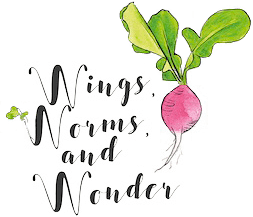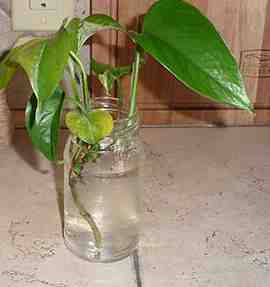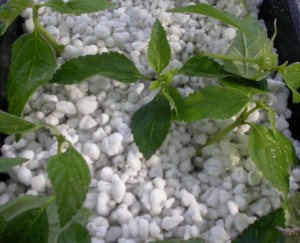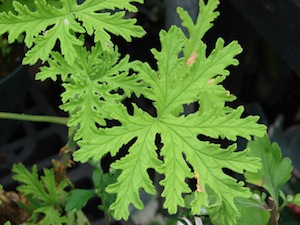Wonder Wednesday #2! Propagation
Propagation is a big word for making new plants from cuttings of an original plant. Depending on the variety, many plants can be propagated simply in water or a common medium such as perlite or gravel. Propagation is a great way to introduce children to the joys of plant sharing and giving living gifts, as well as ways to grow plants other than by seed. The varieties I am recommending for this lesson are pothos, geranium (I like rose geranium because it smells so good), coleus, begonia, and mint because each are easy to find in garden centers, at garden clubs, or at community garden plant sales and can be propagated in either water or medium.
Plant Propagation
Materials
Plastic cups of water: each child should have 2 cups for each variety of cutting
Small pots with soil for each cutting made
Perlite or other common potting material such as gravel
A variety of the plants mentioned above for cuttings. The size of and quantity of the original plants will depend on the number of children you are working with and the number of cuttings you will be making from each plant. These plants will regenerate also and can be cut from many times once they regrow.
Scissors
Optional: powdered rooting hormone
Procedure
Discuss with the children that there are many ways a plant can grow, not only from a seed. Explain that today they will be learning a method of propagation (or breeding of plants) where you actually cut parts off one plant that will grow roots and create a new plant.
Explain that they will be experimenting with regrowing these plants in both water and medium to see which does better.
Show the children the plants they will making cuttings from and allow them to explore these plants observing any characteristics or scents they may have.
Show the children how to make cuttings by cutting each stalk with the scissors about 6 inches long or having approximately 3 leaves and enough stem to immerse in the water or medium.
Each child should take 2 cuttings of each plant. Have them place on in a cup of water and one in a cup of medium and water.
Place the cuttings in a sunny window or outdoors in warm weather. Check the cups each day for root growth and to be sure the cups do not dry out or water level get below the cuttings stem.
Once the plants have grown a few roots a couple inches long, plant them into the small pots with soil and water.
After new growth is witnessed on the potted plants they can be transplanted into larger more decorative pots, into a garden or given as gifts.
The rate at which each cutting will sprout new roots will depend on temperature and the particular variety, but generally they should have roots in a couple weeks at most.
Optional:
If you are working with older children, try dipping the end of the cutting into powdered rooting hormone before placing it in the medium. Observe whether he plant without hormone in water or the one in medium with the hormone grows roots more quickly or vigorously. **Follow all manufacturer instructions and warnings on the rooting hormone bottle and remind children that it is important to wash their hands well after use and not to touch their faces until their hands are washed.
Repot the cuttings into terra cotta pots that the children have painted. Then, give these plants as gifts.



